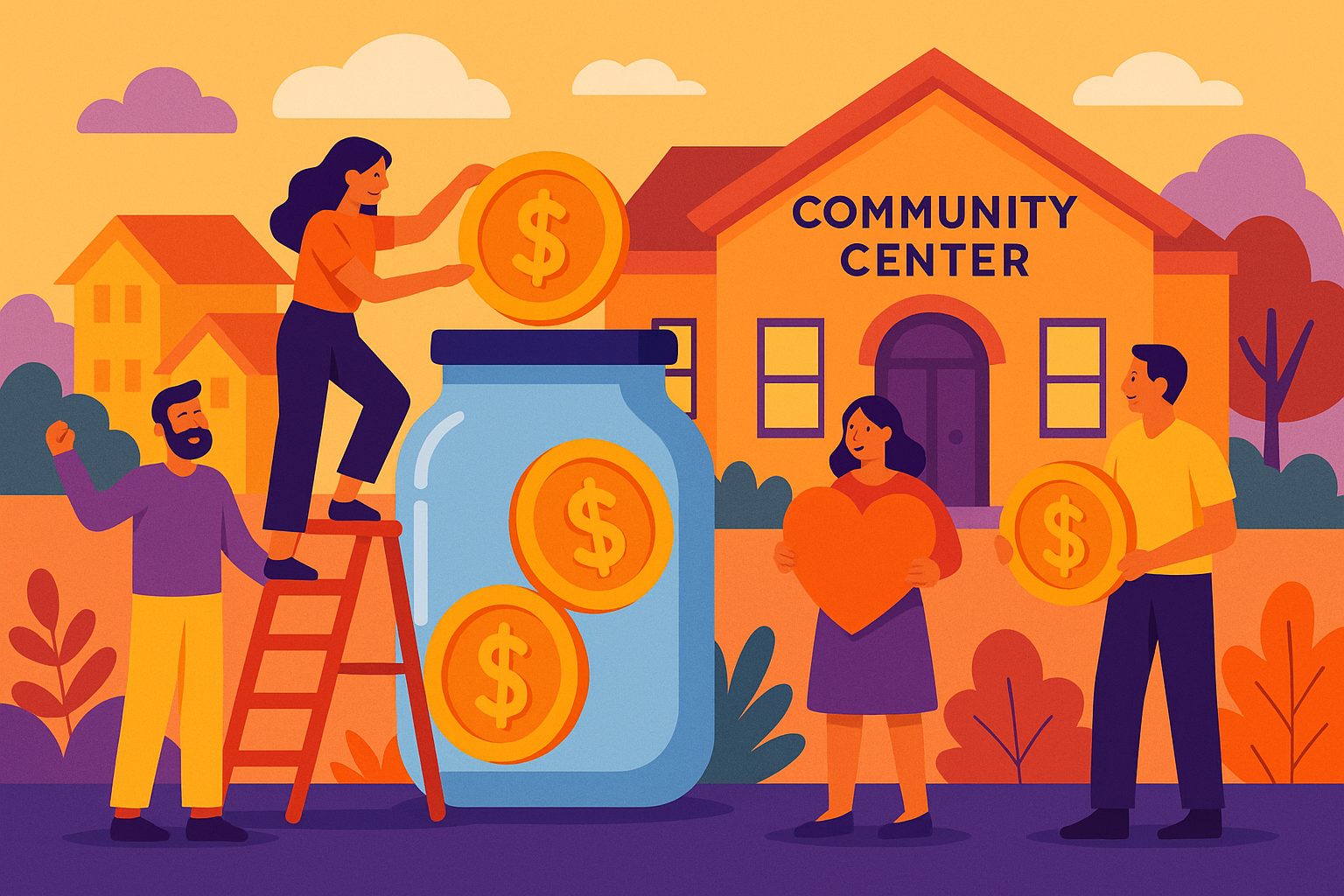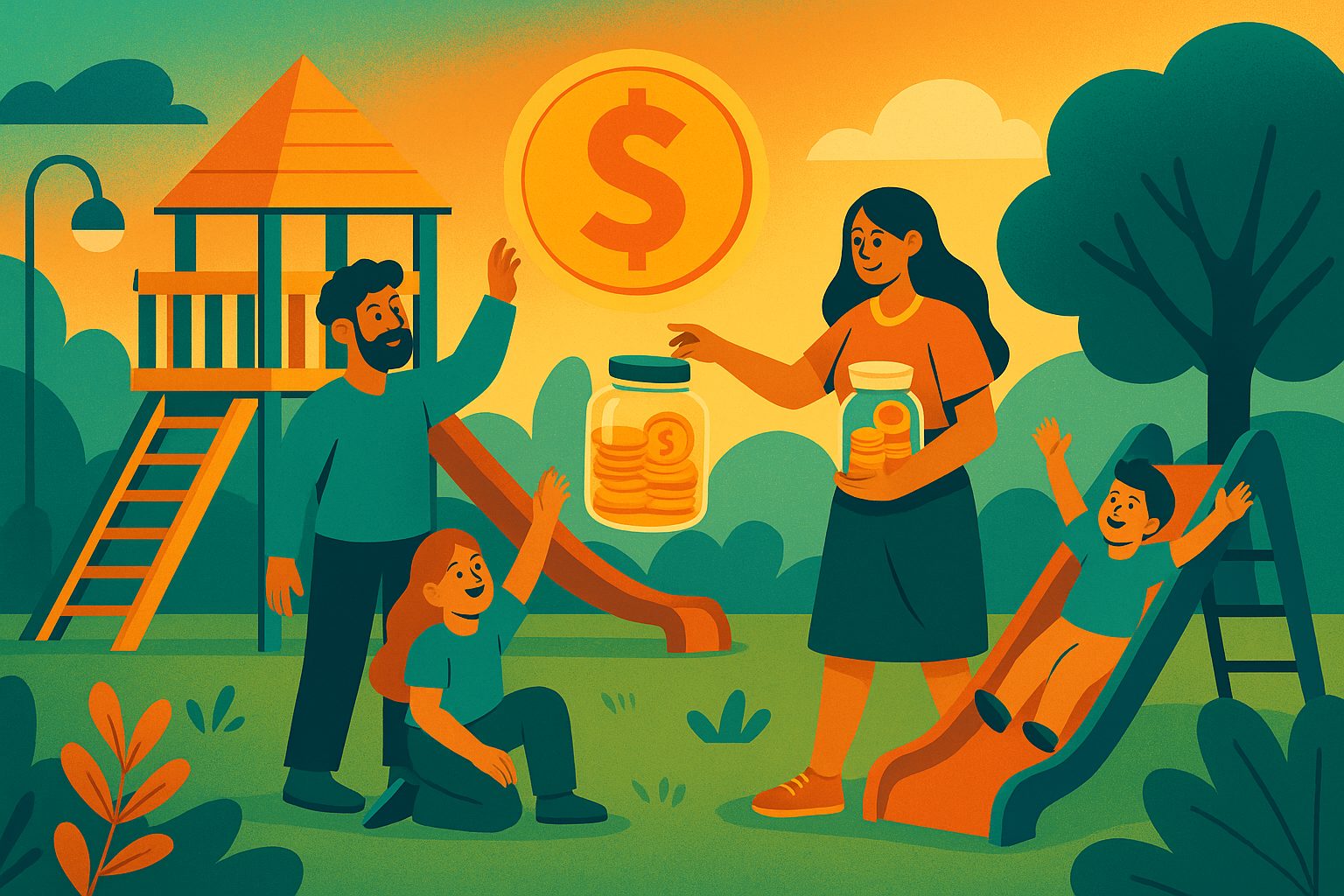Building More Than a Building
Community centers are the pulse of local life. They offer a place to gather, learn, play, heal, and organize. They host everything from after-school programs to senior fitness classes, cultural celebrations to job training sessions. But as essential as they are, funding a new community center—or upgrading an existing one—can be a daunting challenge. Traditional grants and city budgets are often stretched thin, leaving neighborhoods searching for alternative ways to bring their shared vision to life. Enter crowdfunding. More than just a fundraising method, crowdfunding for community centers is a way to galvanize public support, showcase collective need, and create a deeper sense of ownership from day one. It’s not just about raising money; it’s about building momentum, forming connections, and laying the social foundation for a space designed by and for the people it serves.
Getting Clear on the Community’s Vision
Before any crowdfunding campaign begins, the most critical step is defining the vision. A community center means different things to different people. For some, it’s a place for youth to safely hang out after school. For others, it’s a wellness hub with mental health support, a cultural archive, a small business incubator, or a food pantry. The clearer the vision, the more effectively you can rally support. This process begins with active listening. Hold neighborhood forums, attend school board meetings, knock on doors, or set up booths at local events. Ask residents what they want in a community space, what they feel is missing, and what would make them feel connected and seen. These conversations are about more than logistics—they are the emotional core of your campaign. When people feel heard, they show up. When they feel ownership, they contribute. This visioning phase should also address the long-term purpose and stewardship of the center. Will it be volunteer-run? Will it partner with local nonprofits? What groups will be able to use the space and how? These details give potential donors confidence that the project is thoughtful, inclusive, and sustainable.
Telling a Story That Sparks Action
Every successful crowdfunding campaign starts with a great story. In the case of a community center, that story must be authentic, emotionally compelling, and rooted in the real experiences of the people the space will serve. You’re not just building walls—you’re creating a place where children can discover their passions, where elders can share their wisdom, where new immigrants can find belonging, and where dreams can take shape. Start your story by highlighting the need. Describe the current lack of accessible space for youth programs, community meetings, cultural events, or mental health services. Use real testimonials and vivid examples. Let residents share how they’re impacted by the absence of such a space, and what it would mean to have one built. Then, shift to a vision of what’s possible. Paint a picture of the energy, activity, and transformation that the new center would bring. Talk about the future you’re co-creating—where a once-empty lot becomes the epicenter of neighborhood renewal. Emotionally-driven narratives, especially when paired with images or short videos, are incredibly effective in connecting with donors.
Choosing the Right Crowdfunding Platform
The platform you choose for your campaign plays a big role in how accessible, visible, and successful your fundraiser will be. While sites like GoFundMe and Kickstarter are well-known, civic-centered platforms such as ioby, Patronicity, and Spacehive are built specifically for community-focused initiatives. They offer tailored tools, coaching, and connections to local government support and grant matches. Look for platforms that align with your goals and your community’s needs. Consider whether they offer flexible funding, tools for donor engagement, and integrations with social media. Some platforms also have relationships with philanthropic partners or municipal agencies that provide matching funds for community-building projects. These matches can double your impact and lend additional legitimacy to your campaign. Beyond technical features, your platform should feel intuitive and welcoming to your audience. If many of your supporters are older adults or non-native English speakers, simplicity and accessibility are critical. Ultimately, your platform is the stage for your story—make sure it supports your vision, your message, and your people.
Mobilizing the Core Team and Early Supporters
A crowdfunding campaign may be digital, but its strength lies in human relationships. Before you launch publicly, it’s essential to build a committed core team. These are the people who will help you plan, promote, and push your campaign forward. They can include parents, teachers, small business owners, local artists, youth leaders, and anyone with a stake in the future community center. This team should feel ownership of the process and have clearly defined roles. From social media management and email outreach to organizing events and securing sponsorships, every task matters. A well-organized team brings energy and credibility to the campaign. In the early stages, focus on “soft launching” the campaign to trusted supporters. These first contributions help build momentum and social proof. When new visitors see that the campaign already has backers, they are far more likely to give. Ask local champions to spread the word through their networks. Their endorsement carries weight and expands your reach beyond your immediate circle.
Launching Loud and Keeping Up the Energy
When you’re ready to launch, do it with excitement and urgency. Announce the campaign through every available channel—email lists, social media, school newsletters, church bulletins, WhatsApp groups, and local press. Create a sense of moment: this is your neighborhood’s time to shine. During the campaign, regular updates are vital. Share fundraising milestones, spotlight donors, and post behind-the-scenes glimpses of planning meetings or cleanup days at the future site. Personal updates that show real people working toward the goal help keep supporters engaged and inspired. You can also boost energy with mini-challenges or themed giving days. For example, a local business might agree to match donations for 24 hours, or a school may host a fundraiser tied to the campaign. Creativity and consistency are key—keep the story alive with fresh content, visible gratitude, and ongoing calls to action.
Hosting Events That Bring the Vision to Life
Even in the digital age, nothing compares to in-person energy. Hosting community events during your crowdfunding campaign can be a powerful way to rally support and build excitement. These events don’t have to be expensive or elaborate. What matters is that they create connection. A neighborhood picnic, an open mic night, a mural-painting day, or a youth talent show can double as fundraisers and celebration spaces. Invite donors to experience the spirit of the future community center, even before it’s built. Use the opportunity to share campaign progress, feature community voices, and encourage new contributions. These events also serve as great moments for media outreach. Local news outlets love stories that combine grassroots action with creative events. A well-timed story or segment can drive a major surge in donations and introduce your campaign to a wider audience.
Partnering With Local Champions and Allies
Strategic partnerships can make all the difference in reaching your crowdfunding goals. Look for organizations, institutions, and individuals whose missions align with your community center’s purpose. This might include schools, libraries, public health agencies, cultural groups, or local philanthropists. These allies can support your campaign with more than just money. They may offer space for events, help amplify your message, or provide in-kind contributions like signage, materials, or professional services. Some may even want to co-develop programming for the center, creating long-term collaborations that extend beyond construction. Engaging elected officials, city planners, and nonprofit leaders can also build credibility. If local decision-makers publicly endorse the campaign, it can boost donor confidence and attract institutional support. And if your center aligns with broader goals like climate resilience, equity, or youth engagement, you can position it within larger funding and policy conversations.
Recognizing Donors and Building Long-Term Trust
Acknowledging your donors is a fundamental part of a successful crowdfunding strategy. Every donor, regardless of the size of their gift, deserves sincere and timely thanks. Personalized messages, shoutouts on social media, and updates that show progress all reinforce the idea that their contribution is valued and impactful. For major donors, consider offering recognition within the community center itself—through naming opportunities, commemorative plaques, or donor walls. For small donors, create shared moments of appreciation. A community thank-you video, a photo collage, or even a public celebration can go a long way in reinforcing goodwill and encouraging ongoing support. Gratitude shouldn’t end when the campaign does. Keep donors informed as the project moves forward. Let them see their impact unfold through construction updates, early program launches, and stories from those using the space. Transparency, communication, and continued engagement turn first-time donors into long-term champions.
Sustaining the Momentum Beyond the Campaign
Reaching your crowdfunding goal is a huge accomplishment, but it’s just the beginning of your community center’s story. The excitement and energy built during the campaign should flow directly into the next phase: construction, program development, and opening day celebrations. As you move forward, continue to use the momentum to build partnerships, recruit volunteers, and generate buzz. Keep your campaign pages and social media active with updates and calls for support. Host events that re-engage past donors and welcome new ones. Encourage residents to shape how the space evolves over time through surveys, town halls, and participatory design sessions. Most importantly, remember that your community center is not a one-time project—it’s a living, evolving part of the neighborhood. Its success depends not only on bricks and mortar, but on the relationships, vision, and shared investment that brought it to life.
Turning a Campaign Into a Movement
Crowdfunding a community center is about more than building a facility—it’s about cultivating community power. When neighbors come together to fund a shared dream, they’re also declaring that their voices matter, that their needs deserve attention, and that their collective future is worth investing in. That kind of grassroots energy doesn’t fade when the campaign ends. It grows. It becomes a foundation for future initiatives, a model for participatory planning, and a beacon of what’s possible when people take action together. So whether your campaign builds a brand-new facility or revitalizes a treasured space, remember this: every dollar raised represents belief, every volunteer hour reflects love, and every event held is a celebration of shared purpose. Your community center doesn’t just serve the neighborhood. It belongs to it. And there’s no greater success than that.




